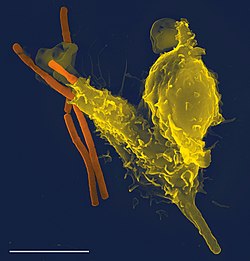
|

The immune system is the set of tissues which work together to resist infections. The immune mechanisms help an organism identify a pathogen, and neutralize its threat.
The immune system can detect and identify many different kinds of disease agents. Examples are viruses, bacteria and parasites. The immune system can detect a difference between the body's own healthy cells or tissues, and 'foreign' cells. Detecting an unhealthy intruder is complicated, because intruders can evolve and adapt so that the immune system will no longer detect them.